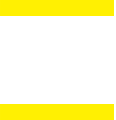For many small business owners and their teams, the modern workday no longer starts at 9 or ends at 5. Instead, it can stretch from dawn to dusk – sometimes even beyond.
Joe Phelan, money.co.uk business bank accounts expert says:
“Small business owners face a growing challenge: the “infinite workday” is stretching hours and draining productivity. To protect teams from burnout and sustain creativity, leaders must set clear boundaries, rethink workflows, and prioritise wellbeing.
According to research conducted by Microsoft,[1] the “infinite workday” is now a defining feature of knowledge work globally. Early-morning email checking, a deluge of daytime messages and meetings, and late-night catch-ups have become routine.
Owing to the rise of hybrid and remote working, it’s quietly become the norm – but that doesn’t mean it’s sustainable.
Microsoft’s data has found that a third of employees now work across evenings and weekends, and nearly 1 in 3 say the pace of work has become “impossible” to keep up with.
For small businesses, this always-on culture presents a unique risk. Unlike larger organisations with layers of management and HR support, small teams are more vulnerable to burnout, resentment, and high turnover if the pace becomes unsustainable.
So, what’s driving the infinite workday, and why should small business owners push back?
The hidden costs of always-on culture
The root of the issue isn’t laziness or inefficiency – it’s overload. Constant notifications, fragmented calendars, and reactive workflows mean employees are working longer just to keep up.
It’s now easier than ever for the boundaries between work and home life to blur. When your office is also your kitchen table, switching off becomes harder, and work-related strain can build.
The Burnout Report 2025[2] suggests a worrying culture of silence around stress. Many employees endure high pressure without adjusting their workload or taking time off, while others hesitate to disclose how much stress they are under. This presenteeism hides the true toll on productivity.
Only 29% of workers report feeling fulfilled at work, while many say they are routinely bored or lonely, and find themselves unable to switch off. Outside the workplace, factors such as poor sleep, money worries, and health challenges further chip away at wellbeing, compounding the impact of work stress.
When the strain is invisible, leaders can struggle to recognise it, making it urgent to foster open cultures and clear boundaries.
This erosion of boundaries can lead to serious consequences: burnout, higher turnover, diminished creativity, and leadership fatigue. One in three UK adults experienced high stress last year, and many small business owners admit they rarely take full holiday breaks.
As workloads grow, so do working hours, creating a vicious cycle of exhaustion and falling productivity.
Something has to give.
Five ways small businesses can break the cycle
Avoiding the infinite workday doesn’t require massive tech overhauls or expensive consultants. It starts with intention, leadership, and a few smart strategies:
1. Redesign the rhythm of the workweek
Instead of defaulting to back-to-back meetings and reactive workflows, carve out blocks of uninterrupted focus time, especially during employees’ peak productivity hours. Consider “no-meeting” mornings or “focus days” to give people space to think and create.
2. Set (and model) clear boundaries
If you’re replying to emails at 10pm or Slack messaging on weekends, your team will follow suit. Model healthy behaviours by working within set hours and respecting others’ time.
3. Reframe urgency
Encourage teams to differentiate between urgent, important, and nice-to-have. Too often, the default is to respond instantly, which fuels the cycle of disruption.
4. Use smart tools that work for you, not the other way around
Whether it’s AI-powered assistants or financial tools like business bank accounts with real-time cashflow alerts or business credit cards that automate expense tracking, smart systems can ease admin burdens. Look for tech that reduces manual effort, whether that’s summarising meetings, reconciling expenses, or simplifying payroll.
5. Check in on workload and wellbeing regularly
Make time for honest conversations about workload and mental health. Are people coping? What’s draining their time? What could be paused, delegated, or dropped? A regular pulse-check can help you identify overload before it turns into burnout.
The “infinite workday” is a profound leadership challenge. For small business owners, this represents not just an operational adjustment, but an opportunity to craft a healthier, more sustainable work culture. The future of work doesn’t have to be defined by endless hours; it can be shaped by clear boundaries and smart strategies that help everyone work smarter, and live better.”

